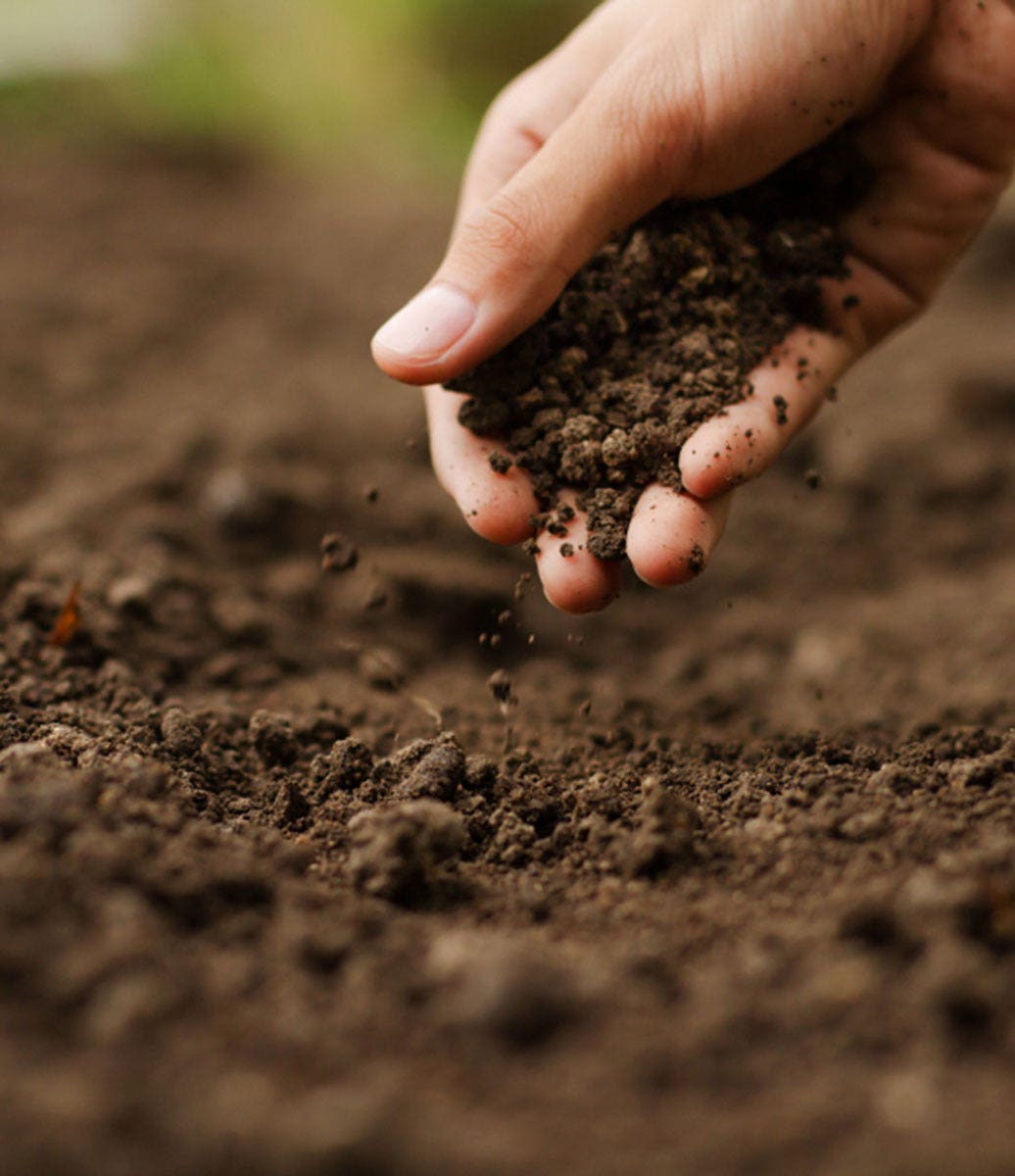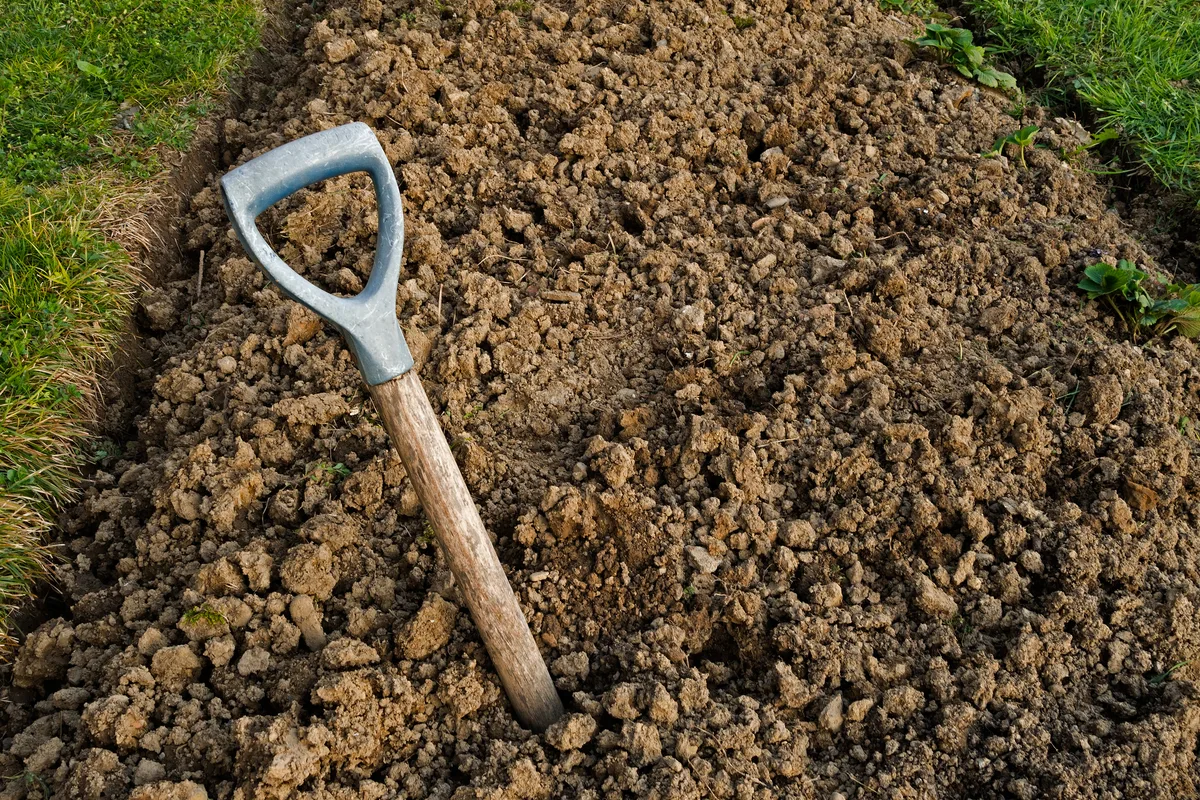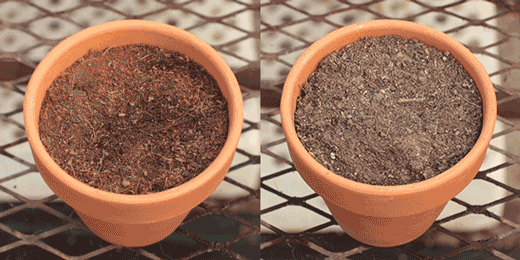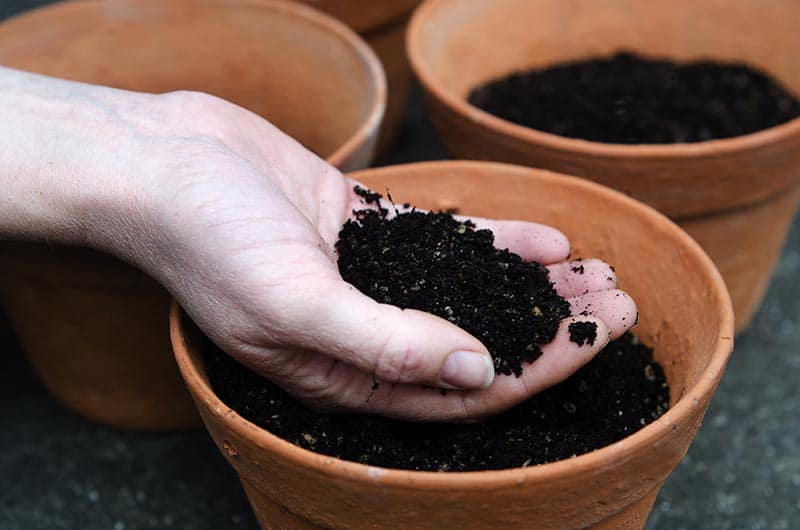type of soil is best for planting-2024
DATE : 6 August 2024 By : Tareq Qteshat


Table of Contents
Toggletype of soil is best for planting
As a professional in the landscaping and gardening industry, I know firsthand how crucial it is to select the best soil for your plant containers. Many believe that all soil types are created equal; however, that couldn’t be further from the truth. Each type of soil is crafted with specific materials and purposes, which play a significant role in the successful growth of plants.
Importance of Choosing the Right Soil for Planting
Understanding the importance of soil selection goes beyond mere aesthetics. Healthy, nutrient-rich soil is fundamental for optimal plant growth. Choosing the appropriate soil type not only aids in promoting healthy roots but also influences water retention, drainage, and overall plant vitality. When working with plant containers, it is essential to consider factors such as the plants’ nutrient requirements, expected growth size, and the overall environment they will thrive in.
From my experience, I’ve encountered numerous gardeners, even those with considerable expertise, struggling with soil selection. The market offers an array of soil types, each presenting its unique characteristics. For instance, potting soil is typically blended with materials like peat moss, vermiculite, and fertilizers to encourage strong plant growth. On the other hand, sandy soil drains quickly but lacks the necessary nutrients for many plants, making it less suitable for container gardening without amendments.
Identifying Different Soil Types
The ability to identify different soil types is crucial for anyone involved in gardening or landscaping. Each soil type can differ significantly in terms of granule size, shape, and mineral content. For example, clay soil has fine particles that hold moisture effectively but can lead to poor drainage. Conversely, loamy soil is often regarded as the ideal blend since it has a balance of sand, silt, and clay, offering the best conditions for most plants. Knowing these differences can help you select the right type for your specific needs.
In conclusion, choosing the best soil for your plant containers is an essential task that should not be taken lightly. A solid soil foundation fosters healthy plants and enhances your gardening success. Should you have any questions or require assistance in selecting the right soil for your landscape, I encourage you to reach out. You can call us today at (844) 837-7222, or you may also contact us via email for personalized recommendations. Let’s ensure that your gardening efforts flourish with the right soil choices!

Understanding Different Types of Soil
Clay Soil
Clay soil is characterized by its fine texture and high density, which can be advantageous in certain contexts. It retains moisture very well, making it ideal for water-loving plants but can create challenges due to its poor drainage properties. The particles in clay soil are tightly packed together, leading to a compact structure that can hinder root growth and limit the aeration required for healthy plants. However, it is also nutrient-rich, which is beneficial for supporting plant health when managed correctly. I often recommend using organic matter or compost to improve the drainage and aeration of clay soil, enhancing its overall performance in a garden setting.
Sandy Soil
Sandy soil features larger particles, resulting in a loose, well-draining structure that promotes quick water runoff. This can be both a blessing and a curse; while it prevents waterlogging, it can also lead to rapid nutrient loss and may require more frequent watering. For gardeners who have sandy soil, incorporating organic materials such as compost can help improve nutrient retention and moisture levels. It is recommended to select drought-resistant plants for sandy soil, as they can thrive in lower moisture conditions. I have witnessed the success of many gardeners who have adapted their planting choices to suit the nature of sandy soil, leading to beautiful, resilient gardens.
In order to achieve a thriving garden, it’s essential to embrace the unique properties of the soil types at hand. Each one offers distinct advantages and challenges, and recognizing these can spare you from frustration in your gardening journey. My professional practice emphasizes the undeniable impact that different soil types have on plant health and vitality. By understanding the foundational characteristics of clay, sandy, and loamy soils, one can make informed choices that will enhance their gardening success.
The ultimate goal is to transform your planting area into a unique ecosystem that fulfills the needs of both plants and gardeners. With the right knowledge and techniques, any soil can be optimized to create a beautiful landscape. Should you need further guidance or have questions specific to your soil type, please don’t hesitate to contact us for a comprehensive consultation. We are here to assist you in building a flourishing garden that reflects your dedication and passion for horticulture!

Loam Soil: The Ideal Soil Type for Plants
Characteristics of Loam Soil
Loam soil is often regarded as the epitome of fertile soil types due to its balanced composition of sand, silt, and clay. This unique blend results in remarkable qualities that benefit plant growth significantly. One of the key advantages is its excellent water-holding capacity, which renders loam soil drought-resistant. During dry spells, plants cultivated in loam are better equipped to access moisture, thereby enhancing overall resilience. Additionally, loam soil warms up faster in spring compared to clay soils, allowing for earlier planting and longer growing seasons.
Nutrient retention is another standout characteristic of loam soil. It holds essential nutrients that are crucial for plant development, making it ideal for a broad array of crops, including vegetables, fruits, and flowers. This nutrient-rich environment fosters robust growth and vitality among the plants. Furthermore, good air and water infiltration in loam soil promotes healthy root systems and mitigates the risk of waterlogging, which can suffocate roots and lead to diseases. Yet, it is worth noting that some loamy soils may contain stones that can complicate harvesting, particularly for specific crops.
Plants and Crops that Thrive in Loam Soil
The versatility of loam soil means that a wide range of plants can flourish within its structure. Vegetables such as carrots, tomatoes, and potatoes all thrive in loam conditions, benefiting from its nutrient-rich composition and excellent drainage properties. Fruits like strawberries and apples also find loam to be accommodating, as it supports healthy root growth and supplies ample nutrients. Moreover, flowers such as daisies and sunflowers flourish, contributing vibrant colors to any garden.
Beyond just common plants, loam soil is ideal for cultivating ornamental plants, shrubs, and certain trees, creating aesthetic and functional garden landscapes rich in biodiversity. My experience with loam soil has taught me that it not only supports plant health and growth but also fosters an environment where gardeners can experiment with different plant varieties and designs.
In conclusion, understanding and utilizing loam soil can significantly enhance your gardening outcomes. By recognizing its advantages—drought resistance, nutrient retention, and superior drainage—you pave the way for a thriving garden. Should you have further inquiries or need tailored advice on your soil conditions, I encourage you to reach out. Together, we can create a flourishing garden that celebrates nature’s beauty and your commitment to horticulture.

Well-Draining and Moisture Retentive Soil for Gardening
Balancing Drainage and Moisture Retention
In my experience as a gardener, I’ve found that achieving the right balance of drainage and moisture retention is crucial for the success of any garden. While loam soil is often hailed as ideal, it’s important to note that different plants thrive in various soil types. For example, succulents prefer sandy soil that drains swiftly, allowing their roots to avoid waterlogging, while certain trees and shrubs can thrive in heavier clay soils. Understanding the moisture needs of individual plants can help you select the right soil blend for your gardening project. I often experiment with amendments to create customized soil mixes tailored to the plants I want to grow, ensuring they receive the optimal conditions.
Importance of Good Drainage for Healthy Plant Growth
Good drainage plays a pivotal role in maintaining healthy plant growth. Overly saturated soil can deprive roots of oxygen, leading to various issues such as root rot or fungal diseases. From my years of practice, I have witnessed the detrimental effects of poor drainage first-hand. Thus, I advocate for using well-draining soil mixes that can retain some moisture while allowing excess water to escape. For instance, integrating materials like perlite or vermiculite can improve drainage in heavier soils, which has helped me cultivate healthier plants. Additionally, when gardening in containers, I make sure to incorporate drainage holes and consider the use of gravel at the bottom to further enhance water flow.
To ensure that my plants remain hydrated yet well-drained, I regularly monitor soil moisture levels and adjust watering schedules accordingly. This practice not only helps in preventing the common pitfalls associated with soggy roots but also promotes strong root systems that can efficiently absorb nutrients.
While loam is a fantastic choice for numerous plants, I have also discovered that experimenting with different soil types can lead to surprising outcomes. For instance, by mixing organic compost with sandy soil, I have discovered a delightful combination that supports both moisture retention and good drainage, producing thriving herbs and vegetables.
In conclusion, the quest for the perfect garden soil type requires patience and practice. By understanding the relationship between drainage and moisture retention and being willing to explore various soil mixes, anyone can create an environment that fosters robust plant growth. I invite any budding gardener looking for personalized assistance or recommendations to reach out—together, we can cultivate a garden that flourishes with life and beauty.

Specialty Soils for Specific Plants
Succulents and Sandy Soil
When it comes to growing succulents, selecting the appropriate soil mix is critical for their well-being. General potting soil may not provide the ideal environment for these drought-resistant plants, as they thrive in well-draining conditions. A sandy soil mixture, often enriched with grit or perlite, allows for rapid drainage, preventing water retention that can lead to root rot. As an expert, I recommend researching the specific species of succulent you are cultivating to ensure their individual needs are met. For instance, cacti, hybrid succulents, and certain sedums may demand a unique blend that ensures adequate airflow and drainage while supporting their growth.
Trees and Shrubs Adapted to Clay Soils
Conversely, trees and shrubs can flourish in clay soils, which are dense and tend to retain moisture. While clay is often viewed negatively due to its compact nature, to deny its benefits would be a disservice to gardeners. Many native species have adapted to thrive in these textures, while some plants, such as willows and certain types of oaks, utilize clay’s moisture retention capabilities to their advantage.
Ensuring proper drainage in clay-rich areas can significantly enhance plant health. One method I employ is the addition of organic matter, such as compost, which improves soil structure, aeration, and drainage over time. In my practice, I also consider the impact of mulch to mitigate standing water, ensuring that the roots are both nourished and healthy.
Ultimately, understanding the advantages and limitations of various soil types will significantly benefit garden enthusiasts. I advocate for getting to know the plants and their innate preferences for soil composition since this knowledge allows for personalization in care. For example, my experience has taught me that mixing organic compost with heavy clay can create a nutrient-rich environment for perennials. Whether incorporating materials like coconut coir to retain moisture or adding expanded clay pebbles for airflow, the right combination can yield flourishing plants.
In pursuit of a thriving garden, it’s crucial to adapt to the specific characteristics of the soil at hand. I encourage all gardeners to experiment boldly with various soil mixtures and amendments. With patience and diligence, anyone can master the art of creating specialized soils tailored to diverse plant needs, ultimately leading to a garden brimming with vitality and beauty.

Buying Guide for Different Types of Soil
Where to Purchase Soil for Gardening
When embarking on a gardening journey, one of the most important considerations is where to source quality soil. Fortunately, gardeners can easily obtain high-quality soil at local nurseries or home improvement stores. These retailers typically carry pre-mixed, bagged soil, but navigating through the options can be overwhelming. It’s essential to understand that not all soil is created equal, and selecting the right type for your garden will significantly impact plant health and growth.
As a professional, I recommend evaluating the label on soil bags, which often specifies the type of soil, intended use, and specific plant recommendations. Common categories include potting mix, seed starting mix, and garden soil, each tailored to different gardening needs. For beginners, potting mix is an excellent choice for container gardening due to its light texture and moisture retention capabilities. Conversely, garden soil is best suited for in-ground planting, as it often contains essential nutrients and organic matter that support plant growth.
Moreover, engaging with knowledgeable staff at these stores can provide invaluable insights. They can guide you in selecting the appropriate soil based on your intended plants and local climate conditions. Don’t hesitate to inquire about soil testing kits, as testing your soil pH is crucial to ascertain its suitability for specific plants. A pH range between 6.0 and 7.0 is often ideal for most garden plants, though certain species may thrive in more acidic or alkaline conditions.
Once you have acquired your soil, the next step is to think about soil amendments. Adding organic matter such as compost can enrich your garden soil, improving nutrient availability and enhancing soil structure. Additionally, incorporating materials like peat moss or coconut coir can help with moisture retention, while perlite or vermiculite may be used to improve drainage in heavier soils.
In conclusion, taking the time to purchase the correct type of soil is paramount to the success of your gardening endeavors. By educating yourself on different soil types, utilizing local resources, and experimenting with various soil amendments, you can create a thriving environment for your plants. Patience and careful observation will allow you to refine your approach over time, leading to a flourishing garden that reflects your dedication and skill as a gardener. Embrace the journey and happy gardening!
Tags: best soil, best soil for growing, best soil for growing plants, best soil for houseplants, best soil for indoor plants, best soil for plant growth success, best soil for plants, best soil for plants in pots, best soil mix for growing vegetable plants, best soil mix for plants, different types of soil for plant growth, potting soil, soil, soil types, type of soil, types of soil, what's the best soil for indoor plants, which soil is best for plant growth










